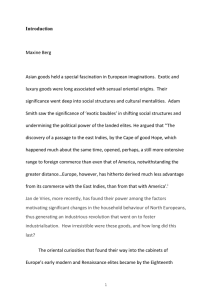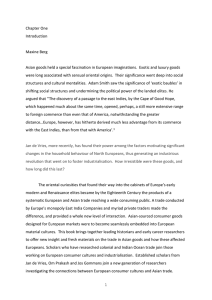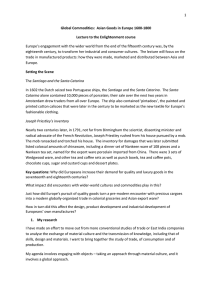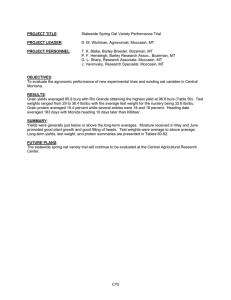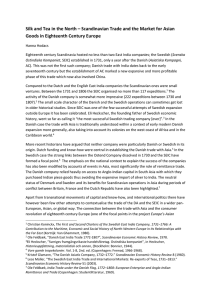Global Commodities: Asian Goods in Europe 1600-1800
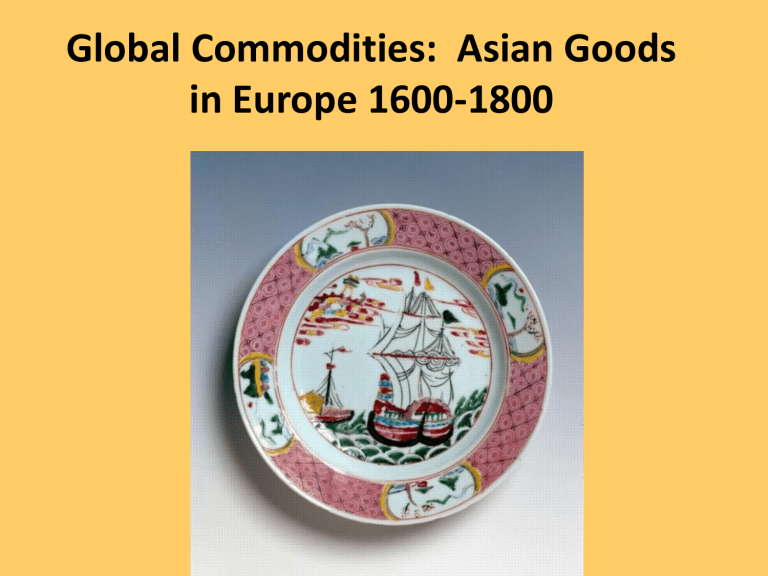
Global Commodities: Asian Goods in Europe 1600-1800
Key questions
Why did Europeans increase their demand for quality and luxury goods in the seventeenth and eighteenth centuries?
What impact did encounters with wider-world cultures and commodities play in this?
How did precious cargoes turn into Asian export ware?
What impact did this trade have on Europe’s own manufactures?
Material Culture
Objects
• Objects and Texts
• Who made it? Who owned it?
• Who used it?
• Problems of interpretation.
Global History
• A different scale
• A different point of view
Trade with Asia
• Europeans as a whole consumed c. 1 lb. of
Asian goods per person in the 18thC.
• Jan de Vries: The industrious revolution
• Trading Routes
• East India Companies
Quantities Traded
• 1.1% per annum -the trade with the Americas
• 50,000 tons sent annually from all of Asia to all of Europe at the end of the 18 th Century.
• Could fit into one of today’s container ships.
• 2% of annual earnings in NW Europe or:
• 1 lb. of Asian goods per person over Europe’s
100 million.
Mochi Cotton, Silk Embroidery of
Gujarat , c. 1700, V&A IS: 15-1953
Painted and Dyed Cotton Hanging,
Coromandel Coast for the Western
Market, late 17 th or early 18 th C.,
V&A IS156-153.
Sample Book
Threads of Feeling
Foundling Hospital: John Styles
Quantities and Qualities
Textiles : a typical order to Bengal in the 1730s:
c. 590,000 pieces in 38 different types, and 98 different varieties.
• Porcelain: 1600-1800: The Dutch imported 43 million pieces; the English, French, Danish and
Swedish companies 30 million pieces.
Tea
• 1770s Legal tea in EIC warehouses was £5.9 million pounds - 7-8 million lbs. smuggled in.
• 16.3 million lbs in 1785, and 21 million lbs by
1800-1.
• The Tea Commutation Act of 1784 reduced the duty from 119% to 12.5%
• Tea varieties: black: Pekoe, Souchong, Congua;
Bohea
European Consumption
• Why were Asian goods so desirable?
• Self-society interaction
• Tastes and experience of the self
• Varieties and social demarcation
• Sociability
European Product Innovation
• Printed calicoes and muslins
• Fine Earthenware - Staffordshire





